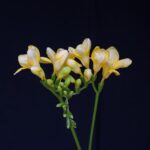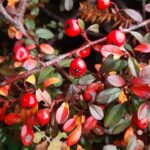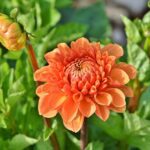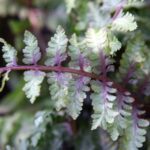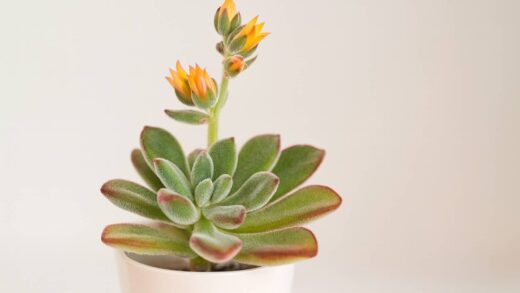The gerbera, this wonderful and cheerful splash of color in our gardens and homes, rewards us with long-lasting blooms when given proper care. A key element of this care is professional pruning and cutting back, which is not only important aesthetically but also plays a fundamental role in maintaining the plant’s health and encouraging flowering. During pruning, we remove old, diseased, or damaged parts, thereby stimulating the development of new shoots and flowers, and improving the overall condition of the plant. Timely and correctly executed pruning contributes to our gerbera flowering more vigorously and abundantly year after year, preventing the occurrence of diseases and the infestation of pests.
The Importance and Basic Principles of Pruning
Pruning gerberas is essential for ensuring the long-term health of the plant and abundant flowering. The primary goal of pruning is to remove spent flowers and old, yellowing, or damaged leaves, which is beneficial for several reasons. Firstly, it prevents the plant from unnecessarily wasting energy on seed production or maintaining diseased parts, and secondly, it stimulates the formation of new flower stalks and leaves. Additionally, thinning improves air circulation within the plant, thereby reducing the risk of fungal diseases that can easily develop in dense, moist foliage. Regular pruning is therefore not just an aesthetic intervention but one of the fundamental means of preserving the plant’s vitality.
The basic principles of pruning gerberas are relatively simple, but adhering to them is crucial for success. Always use sharp and clean pruning shears or a knife to ensure smooth cut surfaces and to avoid damaging plant tissues, thereby minimizing the risk of infections. Pruning should preferably be done during the plant’s active growing period when wounds heal faster. The most important task is the complete removal of spent flowers and their stems, as well as cutting off yellowing, diseased, or damaged leaves. It is important to cut leaves and flower stalks as close to the base as possible, near the plant’s central part, the so-called crown, while being careful not to damage the crown itself.
The gerbera is a plant with a basal rosette of leaves, meaning its leaves and flower stalks emerge directly from a short stem located just above ground level, the crown. Understanding this growth habit is fundamental to applying the correct pruning technique. When removing a leaf or flower stalk, it must be done as deeply as possible, close to the crown, without damaging the crown itself, as new shoots develop from this central part. Damage to the crown can even lead to the plant’s demise. Pruning, therefore, does not mean shearing the foliage but selectively removing unnecessary or damaged parts from the center of the plant.
Several common mistakes can occur when pruning gerberas, which are worth avoiding to maintain the plant’s health. One of the most common mistakes is over-pruning, where too many leaves are removed at once, which can cause stress to the plant and slow its growth. Equally harmful can be the use of dull or dirty pruning tools, which crush tissues and can introduce pathogens into the wounds. It is also important not to leave stubs of leaf petioles or flower stalks, as these can begin to rot and cause diseases. Pay attention to the plant’s signals and prune only when truly necessary, avoiding unnecessary interventions, especially during the plant’s dormant period.
More articles on this topic
When and How Often to Prune Gerberas
The ideal time for pruning gerberas largely depends on the plant’s overall condition and growing conditions, but generally, the most important pruning tasks, such as removing spent flowers and yellowing leaves, can be performed continuously throughout the entire growing season. As soon as a flower fades or a leaf begins to yellow, it is advisable to remove it immediately so the plant does not waste energy on them. There is no single, strictly defined time for “main pruning,” as with gerberas, we are talking more about regular cleaning and maintenance. For outdoor cultivation, spring and summer months are the most active, while for plants grown indoors, this period may be extended.
The frequency of pruning primarily depends on the plant’s growth rate and the speed at which dead parts appear. It is recommended to inspect the plant at least once a week and remove spent flowers, as well as yellow or damaged leaves. This regular attention helps prevent the development of diseases and maintain the plant’s aesthetic appearance, while also encouraging continuous flowering. If the gerbera grows particularly fast and produces many flowers, it may be necessary to do a little “tidying up” more often, even every few days. It is important not to wait until a large amount of dead material accumulates, as this can burden the plant.
Several visible signs indicate that a gerbera needs pruning. The most obvious such sign is the appearance of wilted flower heads with browned petals, which no longer decorate and would only divert the plant’s energy to seed formation. A similarly clear sign is the yellowing, browning, or drying of leaves, which can be part of the natural aging process but may also indicate a nutrient deficiency or disease. If the foliage becomes too dense, this may also warrant pruning for better air circulation and light distribution. Immediate removal of parts attacked by disease or pests is also critical to prevent the problem from spreading further.
The pruning needs of gerberas grown indoors versus outdoors may differ slightly due to environmental differences. Indoor gerberas, which usually live in more stable temperature and light conditions, may require regular cleaning throughout the year, as their growth and flowering are less seasonal. Outdoor gerberas, especially in temperate climates, respond more strongly to seasonal changes. In spring, at the beginning of the growing season, a more thorough cleaning may be necessary to remove leaves possibly damaged during overwintering. In summer, the main focus is on the continuous removal of spent flowers, while in autumn, before the frosts, it is advisable to remove vulnerable parts if attempting to overwinter the plant.
More articles on this topic
Removing Spent Flowers and Dead Leaves
Removing spent flowers, also known as deadheading, is one of the most important pruning operations for gerberas, directly influencing the plant’s flowering propensity. When a flower fades, the plant naturally begins to divert energy towards seed production. However, if we remove the spent flower before it sets seed, the plant will instead divert this energy to developing new flower buds. This continuous intervention thus encourages the gerbera to prolong its flowering period and produce more flowers. Identifying spent flowers is simple: the petals lose their vibrant color, turn brown, wilt, or fall off.
The technique for removing spent flower stalks is crucial for the plant’s health. The flower stalk should be cut or pinched off as close to the base of the plant, the center of the leaf rosette, as possible. Be careful not to damage surrounding young leaves or new buds. Some gardeners recommend not cutting the stalk but gently twisting and pulling it from the base, as this is less likely to leave a stub that could start to rot. If cutting, use sharp, sterilized scissors or a knife to ensure a clean cut surface. Removed flower stalks can be composted, provided they showed no signs of disease.
Removing dead, damaged, or yellowing leaves is just as important as removing spent flowers. These leaves no longer photosynthesize efficiently and, moreover, can draw nutrients away from the healthy parts of the plant. Additionally, they can provide shelter for pests and promote the development of fungal diseases, especially if they lie on the soil or other leaves, creating a moist environment. Leaves showing the first signs of disease (such as powdery mildew spots) should be removed immediately to prevent the pathogen from spreading further. Cut the leaves also at the base, near the crown, taking care to preserve the integrity of the central part.
The removal of old or diseased foliage significantly contributes to improving the overall health of the gerbera. Thinned foliage allows for better air circulation within the plant, which reduces humidity among the leaves and lessens the risk of fungal infections. More light reaches the lower parts of the plant and the young, developing shoots, stimulating their growth. By removing potential hiding spots, pests such as aphids or spider mites are less likely to establish themselves. Overall, this regular cleanup pruning results in a more vigorous, healthier, and more profusely flowering plant.
Cutting Back Gerberas to Stimulate Growth
Although for gerberas the term “cutting back” does not imply a drastic intervention affecting the entire foliage of the plant, as with many other shrubs or perennials, selective pruning to stimulate growth can play an important role. This type of pruning focuses primarily on removing older, less productive leaves and opening up the center of the plant to provide space and light for new, vigorous shoots and flower stalks. The aim is to rejuvenate the plant and maximize its flowering potential without subjecting the plant to excessive stress. This process is more of a continuous renewal rather than a one-time, radical cutback.
When pruning to stimulate growth, the emphasis is on aerating the central part of the plant, the crown. Older leaves, often located in the outer circle, which may have faded slightly or lost their vitality, can be carefully removed at the base. This allows more light and air to reach the center of the plant, where new leaves and flower buds develop. It is important to perform this operation carefully, removing only a few leaves at a time to avoid sudden weakening of the plant. The goal is to maintain an open, yet still lush, leaf rosette capable of maximum photosynthesis.
In certain situations, such as after a more severe pest infestation or fungal disease, a more decisive cleanup pruning may be necessary, during which more leaves are removed than usual. In such cases, the goal is the complete elimination of infected or severely damaged plant parts so that the plant can start afresh. However, this still does not mean removing all the leaves, as the gerbera needs its leaves for nutrient production. After this type of intervention, proper aftercare is particularly important, including optimal watering and nutrient supplementation, so that the plant can regenerate quickly and develop new, healthy foliage.
After pruning to stimulate growth, special attention should be paid to plant care. Provide it with sufficient, but not excessive, water, and regularly supplement nutrients during the growing season with a balanced, bloom-boosting fertilizer. Observe the plant’s reaction to pruning; the appearance of new shoots is usually expected within a few weeks. If the plant responds slowly, check environmental conditions such as light quantity and temperature, and correct them if necessary. Careful aftercare ensures that pruning truly benefits the plant and results in more vigorous, healthier growth.
Preventing Diseases and Pests with Pruning
Regular and professional pruning is one of the most effective ways to prevent gerbera diseases and pests. By removing diseased, damaged, or old plant parts, we reduce the available breeding ground and entry points for pathogens (such as fungi and bacteria). For example, the immediate removal of leaves infected with powdery mildew or other leaf spot fungi can prevent the further spread of spores to the rest of the plant or to neighboring plants. This proactive approach can, in many cases, render subsequent, often more costly and environmentally damaging, pesticide treatments unnecessary.
Improved air circulation achieved through pruning is also crucial in disease prevention. Dense, overlapping foliage favors the development of high humidity between the leaves, creating an ideal environment for many fungal diseases, such as grey mold (Botrytis). By removing excess leaves, especially those in the center of the plant or those touching the soil, we “open up” the plant, allowing freer air circulation. This helps the leaf surfaces to dry more quickly after watering or rain, so fungal spores have less time and opportunity to germinate and develop an infection. Better light penetration also contributes to increasing the plant’s overall resistance.
Pruning can also be an effective tool in pest control. Many pests, such as aphids, scale insects, or spider mites, prefer to settle on hidden, protected plant parts, for example, on the undersides of leaves or among dense shoots. Early detection and removal of infected leaves or flower stalks can help prevent the pest population from multiplying and spreading to the rest of the plant. This can be particularly important for young plants, which are more susceptible to stress caused by pests. Pest-infested parts removed by pruning should be destroyed immediately, not composted, to avoid re-infestation.
Hygiene practices during and after pruning are essential to prevent the spread of diseases. Always use clean, sharp pruning tools. Ideally, disinfect the shears or knife with an alcohol solution or other suitable agent after each plant, or at least after removing a diseased plant part. Removed plant debris, especially if it shows signs of disease or pests, should not be left near the plant but collected and removed from the garden or home. Pathogens can also be transferred on hands or gloves, so it is worth paying attention to their cleanliness, especially when caring for multiple plants.
Special Tips and Common Questions About Pruning Gerberas
The pruning needs of young versus mature gerbera plants may differ slightly, although the basic principles – removing spent flowers and damaged leaves – apply in both cases. For young plants, the main goal of pruning is to promote the development of a healthy, strong base and good shape. Avoid overly aggressive pruning, which can disrupt the young plant’s development. Instead, perform only the most necessary interventions, such as removing an occasional spent flower or a yellowing lower leaf, so the plant can direct its energy towards strengthening its root system and crown. Strong foundations ensure abundant future flowering.
The gerbera’s crown, or the central basal part of the plant, is an extremely sensitive and vital part of the plant, as new leaves and flower stalks originate from it. Damage to it can have serious consequences, including stunted growth or even the death of the plant, often due to crown rot. When pruning, always proceed with extreme caution near the crown and never cut directly into it. If the crown is accidentally damaged slightly, keep the area as dry as possible and watch for signs of rot. The plant may be able to recover from minor, superficial injuries, but more serious damage is often fatal.
Overwintering gerberas and related pruning tasks depend primarily on whether the plant is grown outdoors or in a pot, and on the local climate. In many temperate climates, outdoor gerberas are generally not winter-hardy, so they must either be dug up in autumn and overwintered in a frost-free place or treated as annuals. For plants intended for overwintering, it is advisable to remove all dead or damaged leaves and flower stalks before the frosts set in to reduce the risk of diseases during overwintering. Potted plants should be overwintered in a bright, cool (approx. 7-10 °C or 45-50 °F) place with moderate watering, at which time their pruning needs are also minimized.
A common question is how far back to cut flower stems. The answer is: as close to the base as possible without damaging the crown. Another frequent question is whether all the leaves can be removed at once. This should be strictly avoided, as leaves are necessary for photosynthesis, which provides the plant’s energy supply. If a gerbera temporarily stops blooming after pruning, it might be a sign of stress from the intervention, or simply the plant’s natural cycle. Provide it with optimal conditions and give it time to recover; with proper care, it should soon bloom again.







